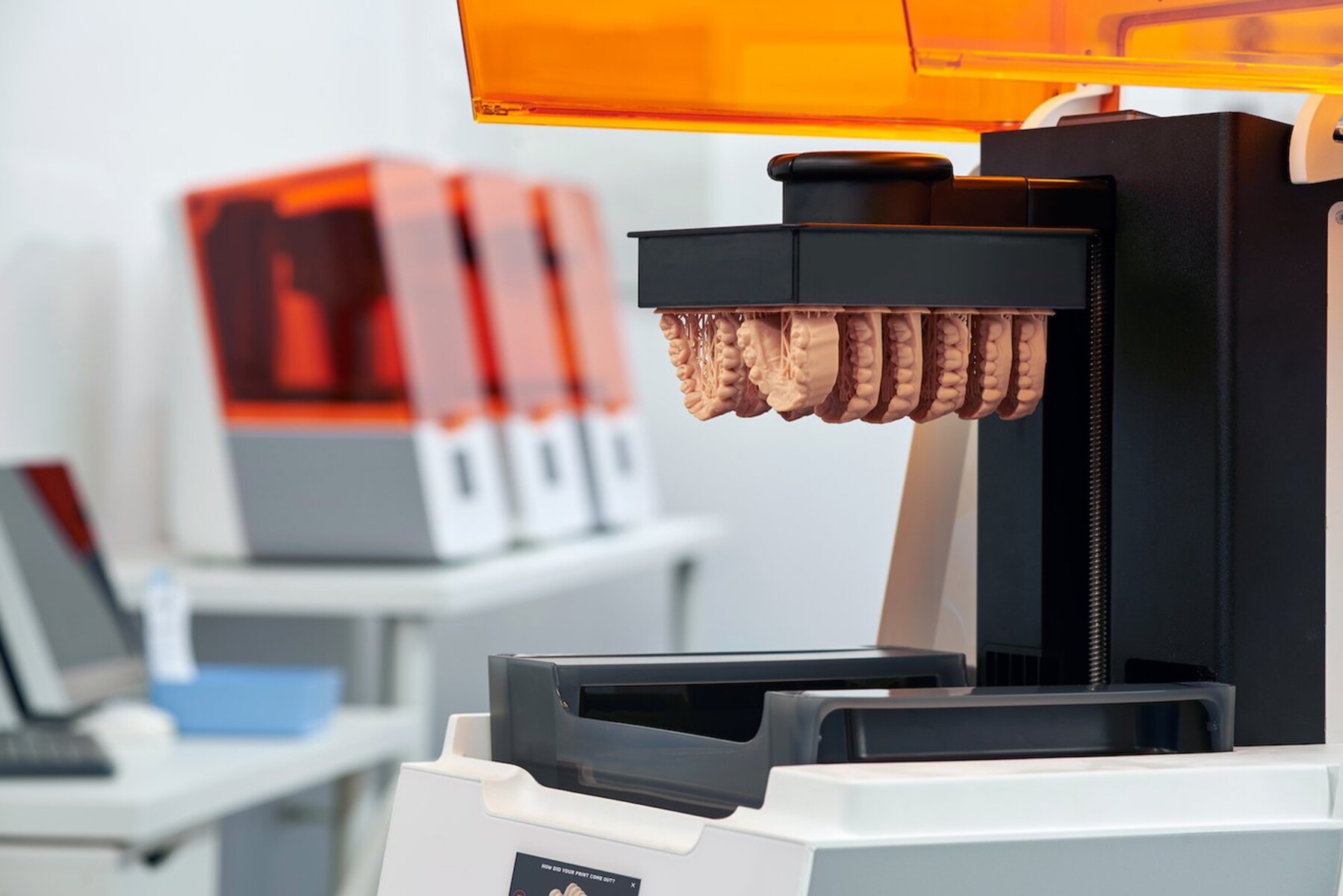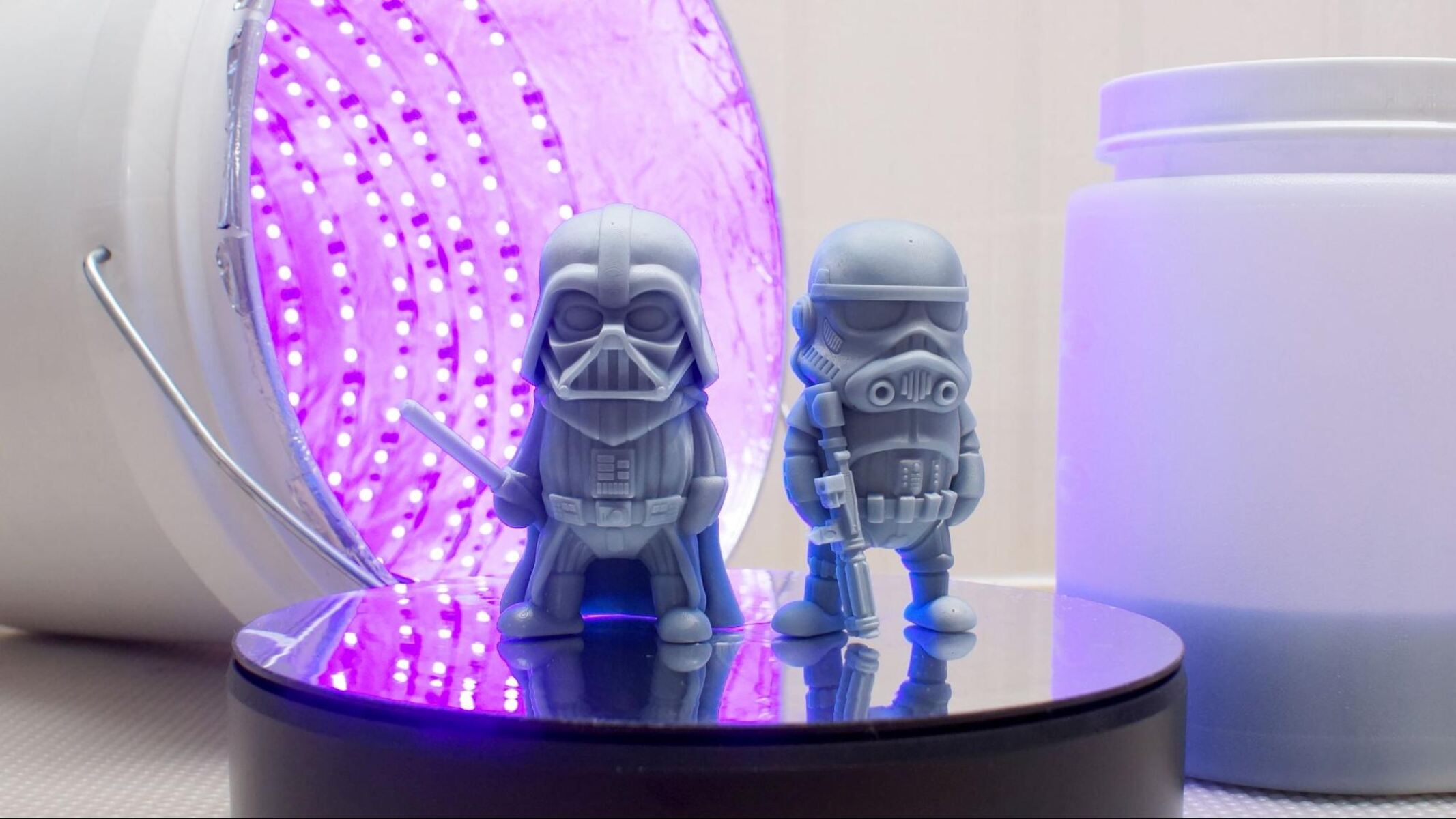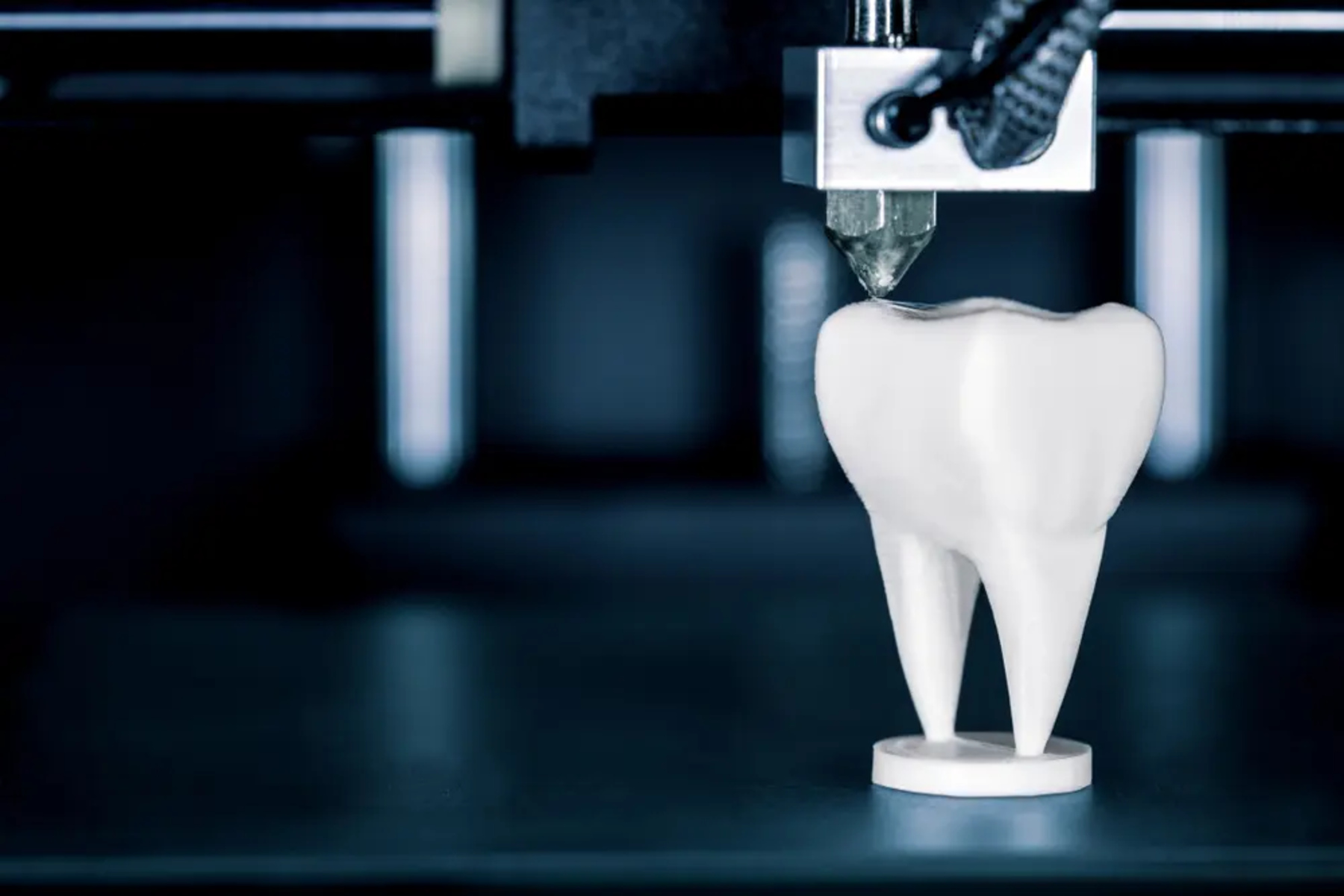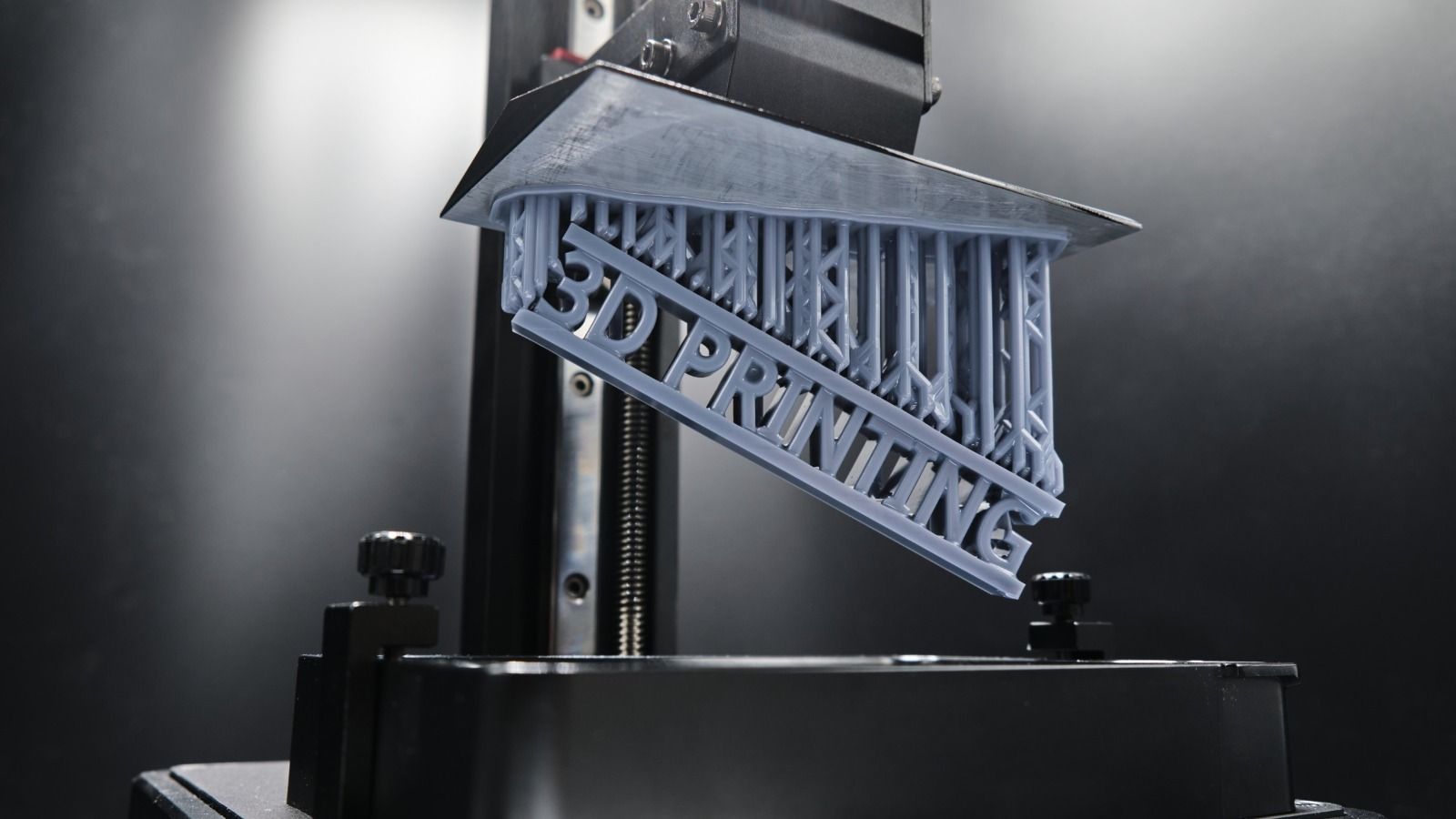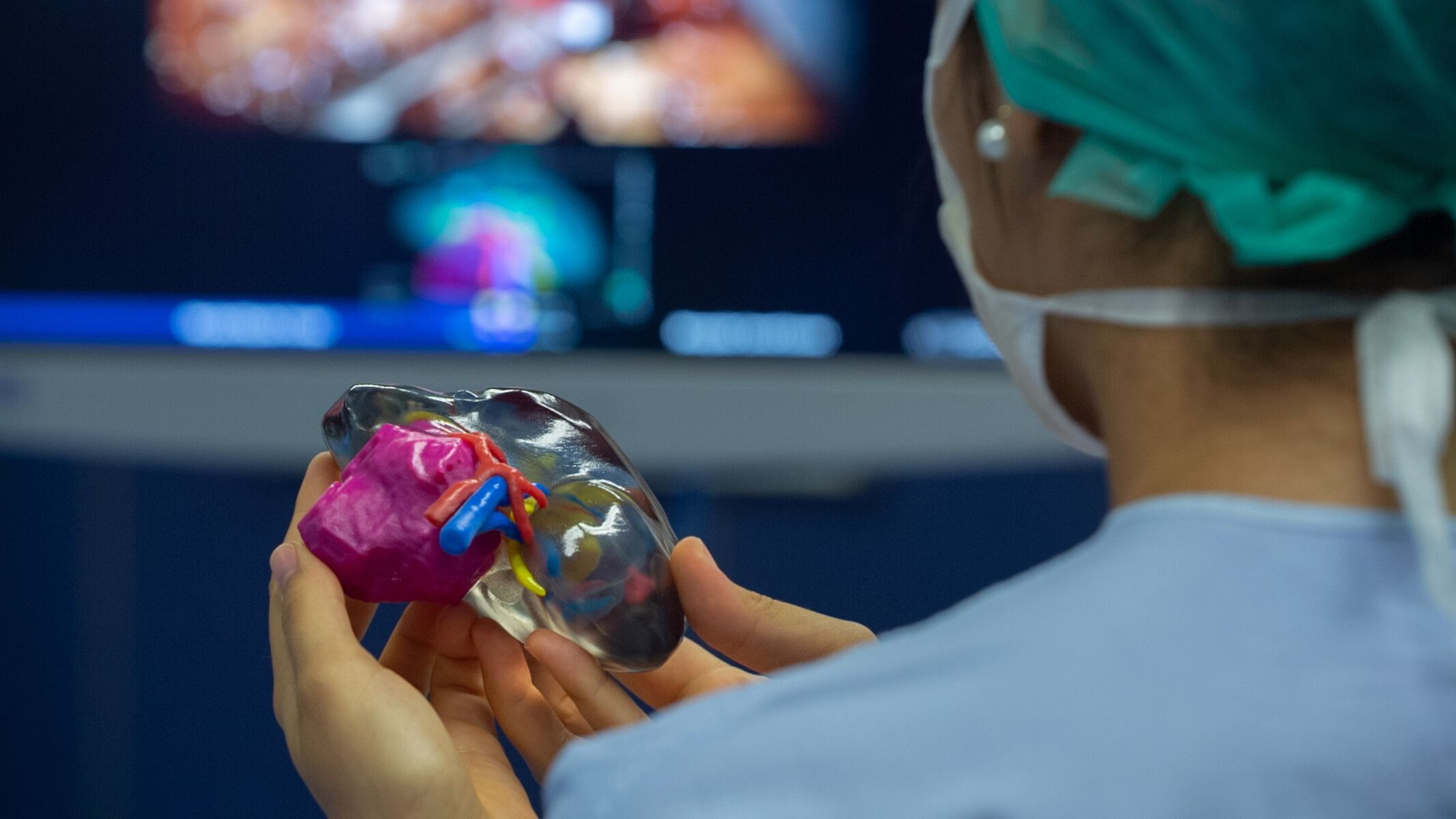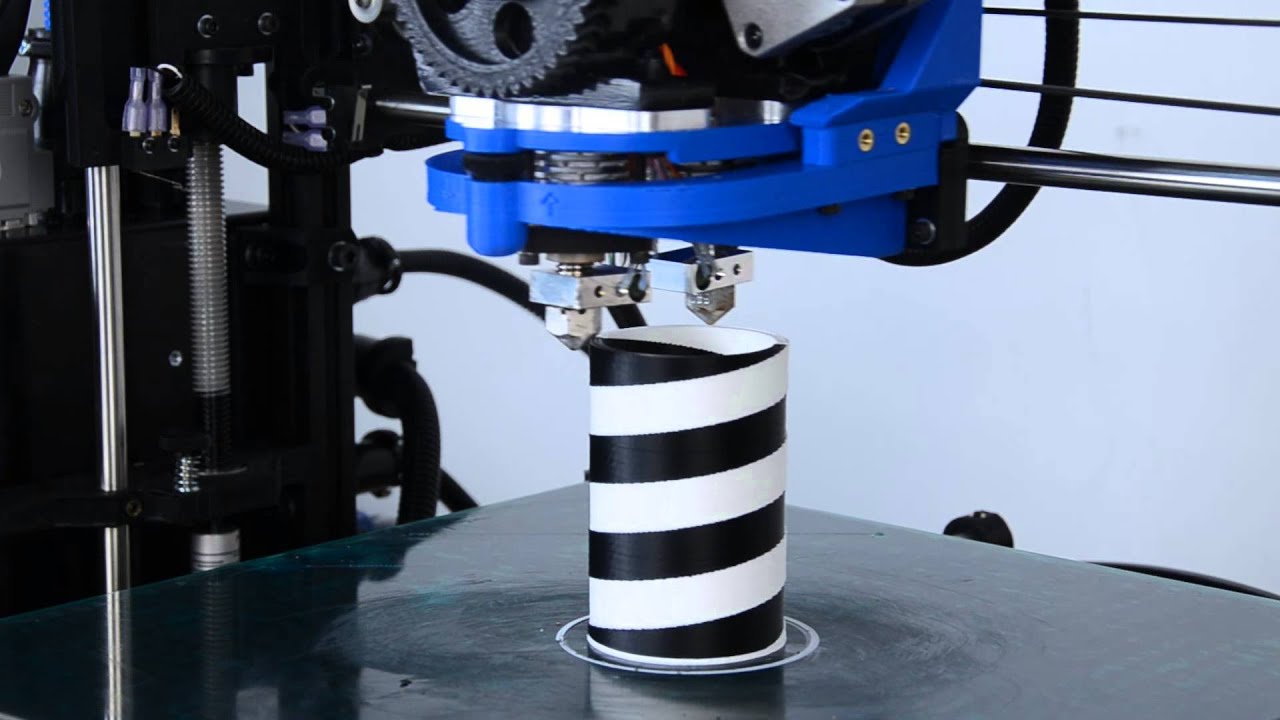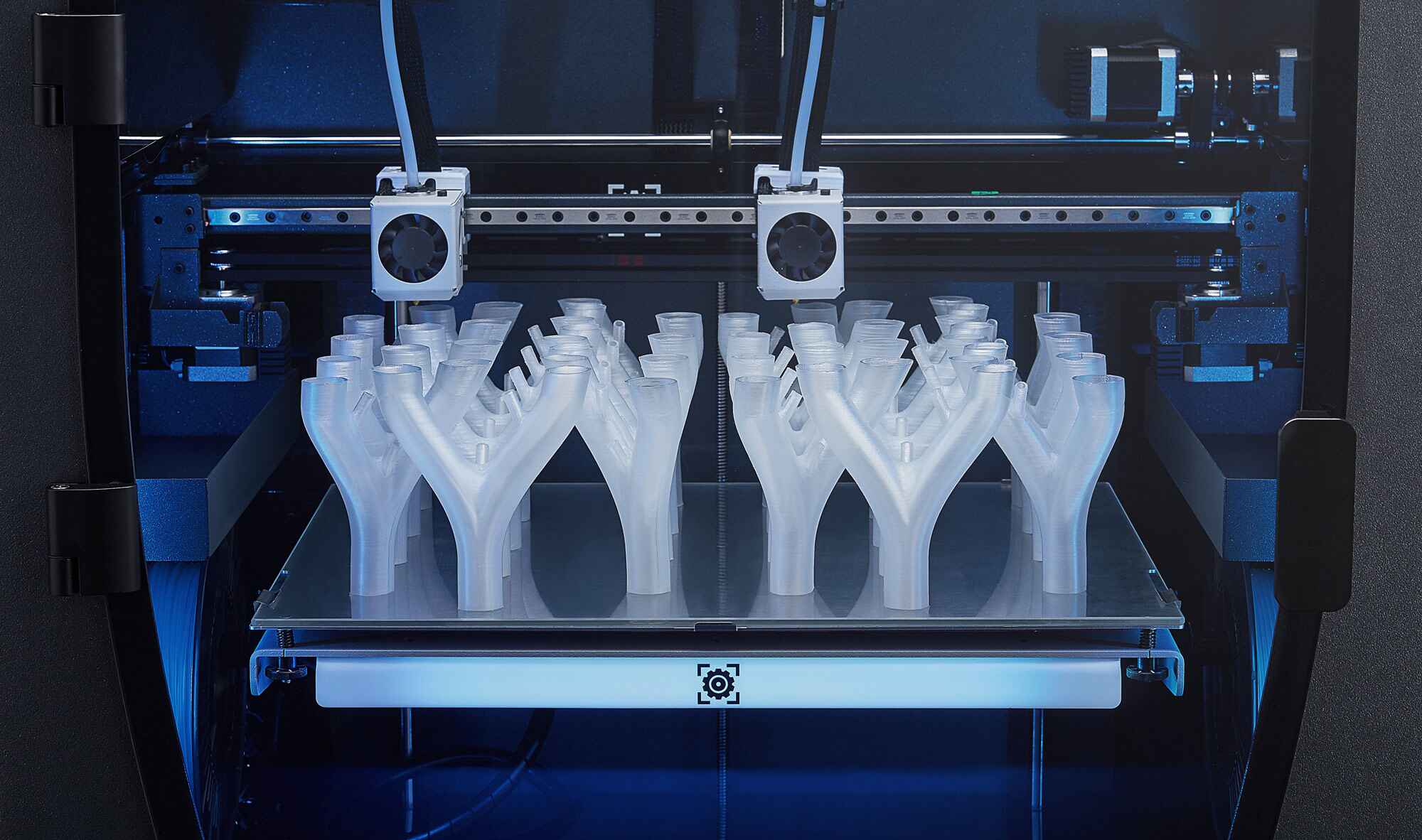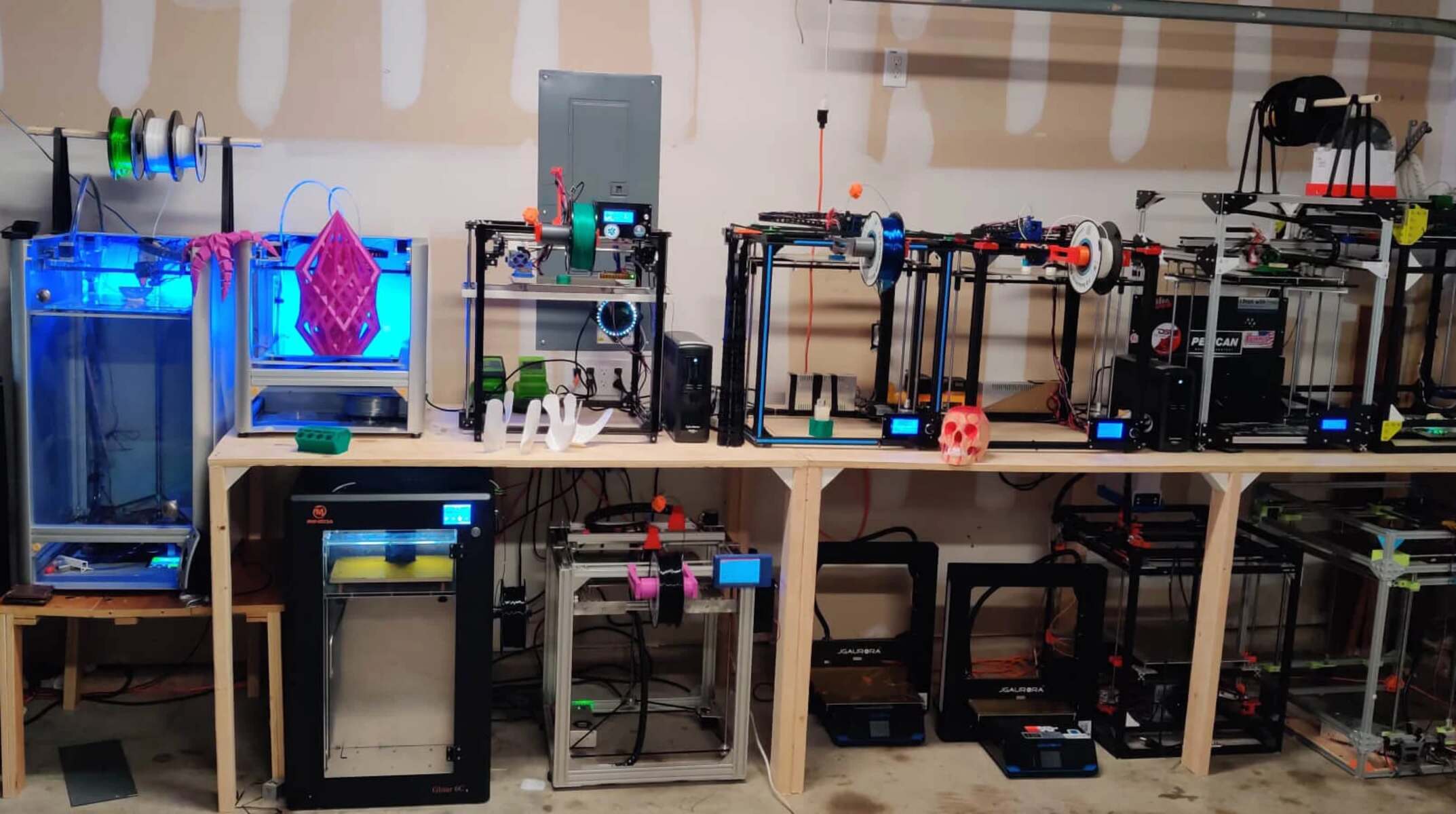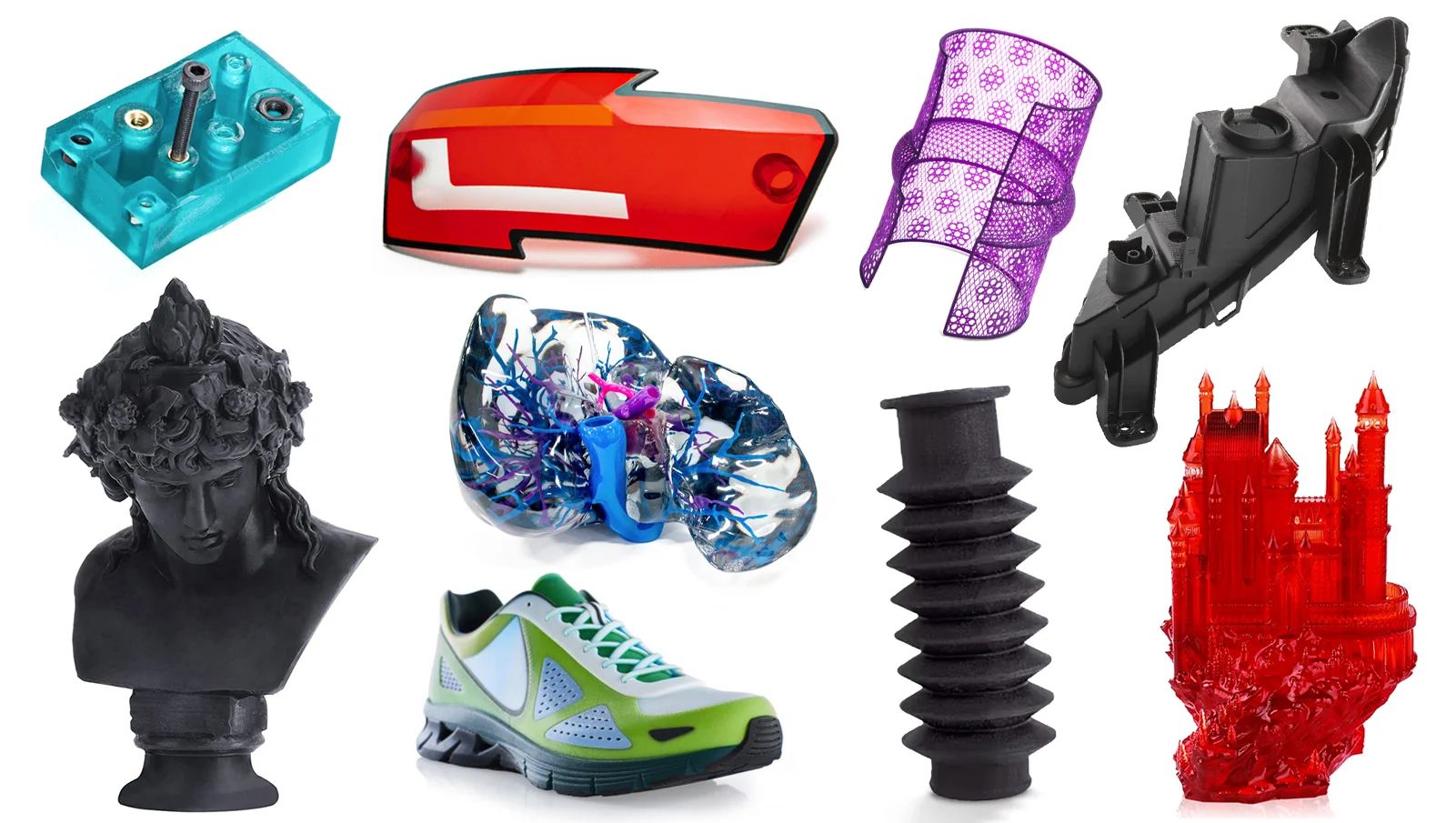Introduction
3D printing has revolutionized various industries, and dentistry is no exception. Dentists now have access to advanced technology that allows them to create precise and customized dental solutions with ease. By utilizing 3D printers specifically designed for dental applications, dentists can enhance their practice and provide improved patient care.
In this article, we will explore the world of 3D printing in dentistry. We will delve into the definition of 3D printing, how it works, and the many benefits it offers to the dental field. Additionally, we will discuss the types of 3D printers commonly used in dentistry and the wide-ranging applications of this technology in creating clear aligners, dental prosthesis, surgical guides, dentures, and orthodontic models.
3D printing, also known as additive manufacturing, is a process that involves building three-dimensional objects layer by layer. It enables dentists to fabricate dental appliances and models with an unprecedented level of precision and accuracy. This technology has transformed the traditional methods of dental manufacturing, which often involved time-consuming and manual processes.
With 3D printing, dentists can now deliver superior quality dental solutions, personalized to each patient’s unique needs. By eliminating the need for manual sculpting or forming of dental appliances, 3D printers offer enhanced efficiency, cost-effectiveness, and reliability.
The ability to generate intricate and highly detailed dental models has significantly improved treatment planning and patient communication. With a 3D printer, dentists can produce physical models that accurately represent the patient’s oral anatomy, allowing for better visualization and comprehension of treatment options.
The benefits of 3D printing in dentistry are not limited to the dental providers alone. Patients also reap the rewards of this technological advancement. They can benefit from faster turnaround times, reduced chairside adjustments, improved fit and comfort, and overall enhanced treatment experiences.
In the following sections, we will go into more detail about how 3D printers work, the different types of 3D printers used in dentistry, and the various applications of 3D printing in the dental field. So, let’s dive deeper into the world of 3D printing and its impact on dentistry.
What is a 3D Printer?
A 3D printer is a cutting-edge technology that allows the creation of three-dimensional objects from a digital design. It utilizes a process called additive manufacturing, where materials are deposited layer by layer to build a physical object.
The concept of 3D printing was first introduced in the 1980s. However, it is only in recent years that the technology has become more accessible and affordable, making it widely adopted across various industries, including dentistry.
Unlike traditional manufacturing methods that involve subtractive processes like cutting or drilling, 3D printing adds material layer by layer to form the desired object. This layer-by-layer approach provides greater flexibility and precision in creating complex shapes and structures.
There are several key components that make up a 3D printer:
- Printer Bed: It is the surface on which the object is built. The printer bed can be flat or have a movable platform that shifts as each layer is deposited.
- Extruder: The extruder is responsible for melting and depositing the printing material. It moves back and forth, laying down the material in thin layers.
- Filament: The printing material, usually in the form of a filament, is fed into the extruder. Common materials used in dentistry include dental resins or polymers that are biocompatible and suitable for dental applications.
- Control System: This system coordinates the movement of the printer components, ensuring precise deposition of the material according to the digital design.
Once the digital design is loaded into the 3D printer, the process of creating the object begins. The printer’s control system directs the extruder to melt and deposit the material layer by layer, following the design specifications.
Throughout the printing process, the printer may incorporate additional features depending on the desired outcome, such as support structures to prevent sagging or the use of multiple print heads to create objects with varying colors or materials.
As the layers of material are built up, the object takes shape and is gradually formed. Once the printing is complete, the object can be removed from the printer bed and may require post-processing steps such as cleaning, polishing, or curing to achieve the desired final result.
Overall, 3D printers have transformed the manufacturing landscape, offering increased efficiency, accuracy, and customization. In the field of dentistry, these printers have opened up new possibilities for creating patient-specific dental appliances and models, leading to improved treatment outcomes and patient satisfaction.
How does a 3D Printer Work?
Understanding how a 3D printer works involves delving into the various steps involved in the additive manufacturing process. While the specifics may vary depending on the type of 3D printer being used, the general workflow remains relatively consistent.
The process of 3D printing begins with a digital 3D model of the object that needs to be printed. This model is created using computer-aided design (CAD) software or obtained through 3D scanning techniques. Once the digital model is ready, it is sent to the 3D printer for production.
The following steps outline the basic workflow of a 3D printer:
- Slicing: The digital model is sliced into multiple, ultra-thin cross-sectional layers using specialized software. Each layer represents the precise thickness of the material to be deposited by the printer.
- Preparation: The printer’s bed is prepared with a layer of adhesive or a removable platform to ensure adhesion of the printed object. If using a resin-based printer, a liquid resin is poured into the vat.
- Printing: The 3D printer begins the printing process by depositing the first layer of material onto the printing surface. The material can be in the form of liquid resin, filaments, or powders, depending on the printer technology used.
- Bonding: For certain printer technologies, such as fused deposition modeling (FDM), the deposited material needs to be heated to a specific temperature to ensure proper bonding between layers. In other technologies like stereolithography (SLA), the material is cured using ultraviolet light.
- Layer-by-Layer Building: The printer continues to deposit and bond subsequent layers of material, following the precise instructions from the slicer software. This layer-by-layer approach gradually builds up the object in a three-dimensional form.
- Support Structures: In some cases, support structures are added during printing to provide stability to overhanging parts of the object. These support structures can be easily removed once the printing is complete.
- Finishing: After the printing process is finished, the object may undergo post-processing steps such as cleaning, sanding, or polishing to further refine its surface finish and remove any support structures.
It is important to note that different types of 3D printers employ various printing technologies, including fused deposition modeling (FDM), stereolithography (SLA), and digital light processing (DLP), among others. Each technology has its own unique process and limitations, but they all aim to achieve the same outcome—creating a physical object from a digital design.
The advancement of 3D printing technology has enabled dentistry to explore new possibilities in patient care. By harnessing the capabilities of 3D printers, dental professionals can produce custom dental appliances, prosthetics, and models with exceptional precision and efficiency.
Now that we have a solid understanding of how a 3D printer works, let’s explore the numerous benefits that 3D printing brings to the field of dentistry.
Benefits of 3D Printing in Dentistry
3D printing has revolutionized the dental industry by providing a range of benefits that significantly improve patient care and enhance the capabilities of dental professionals. Here are some key advantages of utilizing 3D printing technology in dentistry:
1. Enhanced Precision and Accuracy: 3D printing allows for the creation of highly detailed dental models and appliances with unmatched precision. This level of accuracy ensures better fit, improved functionality, and enhanced treatment outcomes.
2. Customization and Personalization: With 3D printing, dental professionals can tailor dental appliances, prosthetics, and models to each patient’s unique needs. This level of customization ensures optimal comfort, aesthetics, and performance.
3. Time and Cost Efficiency: 3D printing streamlines the manufacturing process, reducing production time and costs associated with manual labor. It eliminates the need for creating molds or outsourcing production, allowing dental practices to provide faster turnaround times and more affordable solutions.
4. Reduced Material Waste: Traditional dental manufacturing often results in material waste due to the subtractive processes involved. 3D printing minimizes waste by only using the necessary amount of material for each specific dental appliance or model.
5. Improved Patient Communication: 3D printed models provide tangible representations of a patient’s oral anatomy, making it easier for dentists to explain treatment plans and anticipated results. This visual aid improves patient understanding and communication between the dental professional and the patient.
6. Streamlined Workflow: By integrating 3D printing into their workflows, dental practices can streamline their processes and increase overall efficiency. The ability to create dental models and appliances in-house reduces reliance on external laboratories and allows for quick adjustments or modifications when necessary.
7. Advanced Treatment Planning: 3D printing enables comprehensive treatment planning, especially in complex dental cases. Dentists can use 3D printed surgical guides to accurately plan and perform implant surgeries, resulting in improved implant placement and reduced surgical time.
8. Research and Development: 3D printing technology facilitates research and development in the dental field. Dentists and researchers can use 3D printers to prototype and test new dental materials, techniques, and technologies before introducing them into clinical practice.
9. Improved Patient Experience: The use of 3D printed dental appliances and prosthetics enhances patient comfort and satisfaction. Custom-fitted clear aligners, crowns, dentures, and other devices provide a more comfortable and aesthetically pleasing experience, ultimately improving the patient’s quality of life.
The benefits of 3D printing in dentistry are far-reaching, transforming both the practice of dentistry and the patient experience. With its ability to deliver precise, customized, and cost-effective dental solutions, 3D printing has become an indispensable tool for dental professionals seeking to provide the highest standard of care.
Types of 3D Printers Used in Dentistry
In the field of dentistry, various types of 3D printers are utilized to create customized dental appliances, prosthetics, and models. Each type of printer employs a unique technology, catering to different dental applications and requirements. Here are the three main types of 3D printers commonly used in dentistry:
1. Digital Light Processing (DLP) 3D Printer:
DLP 3D printers utilize a vat of liquid photopolymer resin and a digital light projector to create objects. The projector projects a series of UV light patterns onto the liquid resin, causing it to solidify layer by layer. The process is fast and highly precise, allowing for the creation of detailed dental models and appliances.
2. Stereolithography (SLA) 3D Printer:
SLA 3D printers also rely on liquid photopolymer resin, but instead of using a digital light projector, they use a laser to cure the resin layer by layer. The laser selectively solidifies the resin according to the design specifications, resulting in high-resolution and accurate dental models and appliances.
3. Fused Deposition Modeling (FDM) 3D Printer:
FDM 3D printers work by extruding molten filament material, typically in the form of thermoplastic or dental resin, to build the desired object layer by layer. This type of printer is known for its affordability and ease of use. FDM printers are commonly used in dentistry for creating surgical guides and certain dental models.
Each type of 3D printer has its advantages and limitations. DLP and SLA printers excel in producing highly detailed and precise dental models, crowns, and other appliances due to their ability to achieve fine resolutions. They are particularly suitable for applications that require intricate details and smooth surface finishes.
On the other hand, FDM printers are more cost-effective and offer a wider range of material options. While they may not provide the same level of detail as DLP or SLA printers, they are often used in dentistry for applications like surgical guides, study models, and temporary crowns.
It’s important to note that as technology progresses, new and improved types of 3D printers are continuously being developed for dental applications. Each type brings its own set of benefits and capabilities, offering dental professionals the flexibility to choose the most suitable option for their specific needs.
The adoption of 3D printing technology in dentistry has revolutionized the way dental appliances are manufactured, allowing for precise customization, faster production times, and improved patient outcomes. With a deep understanding of the different types of 3D printers available, dental professionals can select the right tool to enhance their practice and deliver exceptional dental care.
DLP 3D Printer
DLP, which stands for Digital Light Processing, is a 3D printing technology widely used in dentistry. DLP 3D printers utilize a vat of liquid photopolymer resin and a digital light projector to create objects layer by layer.
The process starts by loading a 3D digital model into the DLP 3D printer software. The software then slices the model into thin layers, and the printer begins the printing process by projecting UV light patterns onto the liquid resin.
The UV light causes the resin to solidify, forming the first layer of the object. As the process continues, the printer progressively builds up the object by solidifying each layer of resin based on the UV light patterns. The solidification process is typically quick, allowing for fast and efficient production of dental models and appliances.
DLP 3D printers offer several advantages for dental applications:
1. High Resolution: DLP printers can achieve remarkable levels of detail and precision. The digital light projector exposes each layer of resin with a high-resolution image, resulting in sharp edges, fine details, and smooth surface finishes.
2. Speed: DLP printers are known for their fast printing speed. Since the entire layer is projected and solidified simultaneously, the build time is significantly reduced compared to other 3D printing technologies.
3. Accuracy: These printers provide exceptional accuracy, ensuring that the printed objects closely match the original digital design. This accuracy is crucial in dentistry, where precise dental appliances and models are required for optimal fit and performance.
4. Wide Selection of Materials: DLP 3D printers work with a variety of dental resins, each with specific properties suitable for different applications. This versatility allows dental professionals to choose materials that are biocompatible, durable, and aesthetically pleasing.
5. Cost-Effective: DLP printers offer an affordable solution for producing high-quality dental models and appliances. The speed and accuracy of these printers can result in cost savings by reducing labor and material waste.
DLP 3D printers have been widely embraced in dentistry for fabricating various dental solutions, including clear aligners, crowns, surgical guides, study models, and more. Dental laboratories and practices have greatly benefited from the capabilities of DLP technology, improving efficiency and patient satisfaction.
As DLP technology continues to evolve, advancements such as improved resolution, larger build volumes, and increased material options are further enhancing its potential for dental applications. dental professionals can confidently utilize DLP 3D printers to deliver precise, customized, and high-quality dental solutions to their patients.
SLA 3D Printer
SLA, short for Stereolithography, is a popular 3D printing technology widely used in the dental field. SLA 3D printers create objects using a liquid photopolymer resin and a laser to selectively cure the resin layer by layer.
The SLA printing process begins with a 3D digital model that is sliced into thin layers using specialized software. The sliced model is then sent to the SLA 3D printer, where a laser beam selectively cures the liquid resin according to the design specifications.
As the laser traverses the liquid resin, it solidifies the resin and binds it to the previous layer, gradually building up the object. Once a layer is cured, the build platform moves down, submerging the cured layer in the liquid resin, allowing the process to continue for the next layer.
SLA 3D printers offer several advantages when it comes to dental applications:
1. High Precision: SLA printers can achieve exceptional precision thanks to the accuracy of the laser beam and the fine resolution of the liquid photopolymer resin. This precision results in highly detailed dental models and appliances with excellent surface quality.
2. Smooth Surface Finish: The curing process of the liquid resin results in objects with smooth surface finishes. This is ideal for dental applications where aesthetics play a crucial role, such as clear aligners, crowns, and dental prosthetics.
3. Material Versatility: SLA printers support a wide range of resin materials suitable for dental applications. These materials include biocompatible resins that meet regulatory standards and offer the necessary strength, durability, and flexibility required for dental use.
4. Fast Production: SLA 3D printing is known for its speed, allowing dental professionals to produce dental models and appliances efficiently. The laser curing process enables rapid layer-by-layer solidification, reducing overall production time.
5. Complex Geometries: SLA 3D printers can successfully create intricate and complex dental designs that may be challenging or impossible to achieve with traditional manufacturing methods. This capability enables dental professionals to offer highly customized solutions to their patients.
Thanks to their precision, surface finish quality, and material versatility, SLA 3D printers are widely used in dentistry for producing dental models, clear aligners, crowns, retainers, and surgical guides, among other applications. The accuracy and high level of detail provided by SLA 3D printers contribute to improved treatment outcomes and patient satisfaction.
With ongoing advancements in SLA technology, such as faster printing speeds, larger build volumes, and improved resins, dental professionals can continue to rely on SLA 3D printers to create precise, patient-specific dental solutions.
FDM 3D Printer
FDM, or Fused Deposition Modeling, is a widely used 3D printing technology in dentistry. FDM 3D printers work by extruding molten filament material, typically a thermoplastic or dental resin, to build the desired object layer by layer.
The FDM printing process begins with a 3D digital model imported into the printer’s software. The software slices the model into thin layers, and the printer’s extruder heats the filament material to its melting point. The melted filament is then deposited onto the build platform in a precise pattern, forming the first layer of the object.
As each layer is deposited and cooled, the build platform moves down, and the printer adds subsequent layers until the entire object is complete. The layer-by-layer approach of FDM 3D printing allows for the creation of dental models, surgical guides, and other dental appliances with varying degrees of complexity.
FDM 3D printers offer several advantages for dental applications:
1. Affordability: FDM printers are generally more affordable compared to other types of 3D printers, making them accessible to a wide range of dental professionals. The lower cost allows dental practices to incorporate 3D printing technology into their workflow without breaking the budget.
2. Material Versatility: FDM printers can work with a variety of filament materials, including thermoplastics like PLA and ABS, as well as biocompatible dental resins. This versatility enables dental professionals to choose materials based on strength, flexibility, and biocompatibility requirements.
3. Ease of Use: FDM printing is relatively straightforward and user-friendly. The filament material is loaded into the printer, and the software takes care of slicing the digital model and controlling the extruder, allowing for easy setup and operation.
4. Support Structures: FDM printers can easily incorporate support structures during printing to provide stability for overhanging parts of the object. These structures can be removed once the printing is complete, facilitating the production of complex dental models and appliances.
5. Size and Build Volume: FDM printers are available in a range of sizes and offer larger build volumes compared to other types of 3D printers. This allows for the production of larger dental models or multiple objects in a single print run.
FDM 3D printers are commonly utilized in dentistry to create surgical guides, study models, temporary crowns, and other dental appliances. While they may not achieve the same level of detail as SLA or DLP printers, FDM printers provide a cost-effective solution for many dental applications.
The ease of use, material versatility, and affordability of FDM technology make it an attractive option for dental professionals who are interested in implementing 3D printing into their practice. With ongoing advancements in FDM technology, the quality and capabilities of FDM 3D printers continue to improve, offering even more opportunities for dental innovation.
Applications of 3D Printing in Dentistry
3D printing has revolutionized the field of dentistry by offering a wide range of applications for creating customized dental solutions. From clear aligners to surgical guides, 3D printing technology has transformed the way dental appliances and models are produced. Here are some key applications of 3D printing in dentistry:
1. Clear Aligners: 3D printing has revolutionized the orthodontic industry by enabling the production of clear aligners. With 3D scanning and printing technology, dental professionals can create custom aligners that gradually align the patient’s teeth, providing a discreet and comfortable alternative to traditional braces.
2. Dental Prosthesis: 3D printing is widely used in the production of dental prosthetics like crowns, bridges, and dentures. Through digital scanning and 3D printing, dental professionals can create precise and customized prosthetics that match the patient’s natural teeth, ensuring a comfortable fit and natural-looking appearance.
3. Surgical Guides: 3D printing technology is utilized to create surgical guides for dental implant placement. By using 3D scans of a patient’s mouth and a digital implant planning software, dental professionals can design and 3D print surgical guides that precisely indicate the optimal location and angle for implant placement, enhancing the accuracy and success of the procedure.
4. Dentures and Orthodontic Models: 3D printing is used to produce dentures and orthodontic models. By scanning the patient’s mouth, dental professionals can create highly accurate 3D models that are then 3D printed. This allows for the fabrication of dentures and orthodontic models that fit the patient’s unique oral anatomy, improving comfort and performance.
5. Dental Models and Study Models: 3D printing technology has revolutionized the creation of dental models and study models used for treatment planning and patient communication. With 3D scans and 3D printing, dental professionals can produce accurate physical models that represent the patient’s oral anatomy, facilitating better understanding and visualization of treatment options.
6. Splints and Night Guards: 3D printing is employed to produce splints and night guards that help with various dental conditions, such as teeth grinding or temporomandibular joint disorder (TMJ). Customized 3D printed splints and night guards ensure a comfortable fit and provide effective support for patients.
7. Dental Education and Training: 3D printing has become a valuable tool in dental education and training. Dental schools and training programs can utilize 3D printing to produce accurate dental models and anatomical replicas for hands-on practice and demonstrations, enhancing the learning experience for dental students and professionals.
These are just a few examples of how 3D printing technology is transforming the field of dentistry. With its ability to create customized, precise, and patient-specific dental solutions, 3D printing has opened up new possibilities for dental professionals, improving treatment outcomes and patient satisfaction.
Clear Aligners
Clear aligners have revolutionized orthodontic treatment, offering a discreet and comfortable alternative to traditional braces. These custom-made orthodontic devices are designed to gradually shift teeth into proper alignment, resulting in a straighter and more aesthetically pleasing smile. 3D printing plays a pivotal role in the production of clear aligners, making the process highly precise and efficient.
The process begins with a comprehensive examination of the patient’s teeth, gums, and overall oral health. Dental professionals utilize 3D scanners to capture precise digital impressions of the patient’s teeth and create a virtual model of the desired end result. This digital model is then used to develop a series of clear aligners that will incrementally move the patient’s teeth towards the desired final position.
3D printing is employed in the creation of these clear aligners. The digital model is segmented into individual aligners, each representing a different stage of tooth movement. Highly accurate 3D printers utilize biocompatible dental resins to produce these aligners layer by layer.
The advantages of 3D printing clear aligners are numerous:
Precision: 3D printing ensures a high level of precision in fabricating clear aligners. The aligners are designed to fit snugly over the patient’s teeth, providing optimal comfort and promoting efficient tooth movement.
Customizability: Each clear aligner is custom-made to suit the patient’s unique dental anatomy and treatment plan. The aligners are digitally designed and 3D printed to accurately match the shape and alignment goals specified by the orthodontist.
Comfort and Convenience: Clear aligners are made from a smooth, BPA-free plastic material that is comfortable to wear. They are easily removable, allowing the patient to practice good oral hygiene and eat without restrictions during treatment.
Aesthetics: Clear aligners are transparent, making them virtually invisible when worn. This allows patients to undergo orthodontic treatment discreetly, without feeling self-conscious about their appearance.
Monitoring Progress: With 3D printing technology, dental professionals can incorporate features into the aligners that allow for tracking and monitoring the progress of tooth movement. This enables the orthodontist to ensure treatment is progressing as planned and make any necessary adjustments along the way.
Clear aligners have rapidly gained popularity due to their effectiveness, comfort, and aesthetic appeal. The combination of 3D scanning and 3D printing allows dental professionals to provide highly customized treatment plans, tailoring each aligner to the specific needs and goals of the patient.
Through the power of 3D printing, clear aligners have transformed the field of orthodontics, offering patients a convenient and discreet way to achieve a straighter, more aligned smile. As technology continues to advance, 3D printing will play an even more significant role in improving the precision, efficiency, and overall effectiveness of clear aligner treatment.
Dental Prosthesis
Dental prostheses, such as crowns, bridges, and dentures, play a crucial role in restoring the function and aesthetics of a patient’s smile. 3D printing technology has revolutionized the production of dental prostheses, offering numerous benefits in terms of customization, precision, and efficiency.
The process of creating dental prostheses using 3D printing begins with digital scanning or impressions of the patient’s teeth and surrounding oral structures. These digital scans or impressions are then used to create a virtual model of the desired restoration.
With the digital model in place, dental professionals can utilize 3D design software to precisely design the dental prosthesis to match the patient’s natural teeth and ensure a proper fit. The virtual model is segmented into individual layers, which are then 3D printed using biocompatible dental resin or other suitable materials.
The use of 3D printing technology in the creation of dental prostheses offers several advantages:
Customization: By leveraging 3D printing, dental professionals can create highly customized dental prostheses that match the patient’s unique oral anatomy. The digital design allows for precise adjustments to achieve a natural fit and appearance, resulting in improved comfort and patient satisfaction.
Precision and Accuracy: 3D printing enables dental prostheses to be produced with a high level of precision and accuracy. The intricate details and contours of the restoration can be faithfully replicated, resulting in a seamless integration with the patient’s existing teeth.
Efficiency: With 3D printing, the production of dental prostheses becomes more efficient. The digital workflow eliminates the need for traditional manual labor and the creation of physical molds, reducing time and cost associated with traditional manufacturing methods.
Material Options: 3D printing technology offers a range of material options suitable for dental prostheses. Dental professionals can choose from biocompatible materials that are durable, aesthetically pleasing, and meet regulatory standards for safety and performance.
Minimized Chairside Adjustments: Dental prostheses created using 3D printing technology often require minimal chairside adjustments. The highly accurate and customized nature of these restorations ensures a proper fit, reducing the need for extensive adjustments during dental appointments.
The advancements in 3D printing technology have transformed the production of dental prostheses, providing dental professionals with a powerful tool for delivering precise, customized, and high-quality restorations to their patients. Patients benefit from improved aesthetics, functionality, and overall oral health as a result of these advancements in 3D printing.
As the field of 3D printing continues to evolve, dental professionals can expect further advancements in materials, printing speed, and resolution, allowing for even more precise and efficient production of dental prostheses. The integration of 3D printing in dentistry has contributed to improved patient experiences and outcomes, making dental prostheses more accessible and effective than ever before.
Surgical Guides
Surgical guides are essential tools used in implant dentistry to ensure accurate and precise implant placement. These guides enhance the predictability and success of implant surgeries by providing a clear path, depth, and angle for the placement of dental implants. 3D printing technology has revolutionized the production of surgical guides, making them highly accurate and efficient.
The process of creating a surgical guide using 3D printing begins with a digital scan of the patient’s mouth and cone-beam computed tomography (CBCT) images. These digital files are then merged using specialized software to create a three-dimensional model of the patient’s oral structures.
With the digital model in place, a qualified dental professional can plan the implant placement virtually. Using implant planning software, the dentist can determine the optimal location and angle for each implant based on the patient’s bone structure, neighboring teeth, and aesthetic considerations.
Once the implant positions are planned, a surgical guide is designed using 3D software. The guide is customized to fit securely in the patient’s mouth and provides guides or sleeves for precise implant placement. The digital design is then sent to a 3D printer, which manufactures the surgical guide layer by layer using biocompatible resin.
The utilization of 3D printing in the creation of surgical guides offers several advantages:
Precision and Accuracy: 3D printing ensures the surgical guides are produced with exceptional precision and accuracy. The guides correspond precisely to the virtual implant plan, guiding the dentist to the predetermined implant positions during surgery and reducing the risk of errors.
Improved Efficiency: By allowing dentists to pre-plan implant placements and produce surgical guides, 3D printing streamlines the implant surgery process. Surgeons can save time during the surgery, as the guide eliminates the need for time-consuming manual measurements and adjustments.
Minimized Invasiveness: Surgical guides enable minimally invasive implant procedures. The guides restrict the drill’s movement, preventing unnecessary bone tissue removal and ensuring precise implant placement, ultimately promoting faster healing and reduced patient discomfort.
Enhanced Predictability: The use of 3D printed surgical guides increases the predictability and success rate of implant surgeries. The accurate placement of implants enhances osseointegration, the process by which the implant fuses with the bone, leading to more optimal long-term results.
Better Patient Communication: Surgical guides provide patients with a visual representation of their treatment plan, increasing their understanding and confidence in the implant procedure. Clear communication between the dental professional and the patient helps to manage expectations and ensure patient satisfaction.
3D printing has transformed implant dentistry by enabling the precise and efficient production of surgical guides. This technology has revolutionized the implant placement process, resulting in improved surgical outcomes and enhanced patient experiences. As 3D printing technology continues to advance, the accuracy and versatility of surgical guides are expected to further improve, making implant procedures even more precise and predictable.
Dentures and Orthodontic Models
3D printing technology has revolutionized the production of dentures and orthodontic models, offering numerous benefits in terms of customization, accuracy, and efficiency. Dentures and orthodontic models that are specifically tailored to each patient’s unique needs can be created with exceptional precision and detail.
Using traditional methods, the creation of dentures involved time-consuming manual labor and multiple appointments. 3D printing has significantly streamlined this process, allowing for a more efficient and cost-effective production.
With 3D printing, the process begins with a digital scan or impression of the patient’s mouth. This digital data is then used to create a three-dimensional model of the patient’s oral structures, which serves as the foundation for the creation of dentures or orthodontic models.
3D design software is utilized to precisely design the dentures or orthodontic models based on the patient’s specific needs. The digital model is then sent to the 3D printer, which uses biocompatible dental resins to manufacture the dentures or orthodontic models layer by layer.
Dentures: 3D printing has revolutionized the production of dentures, offering a highly accurate and customized solution for replacing missing teeth. The digital design allows for precise adjustments and customization to ensure optimal fit, comfort, and aesthetics. With 3D printing, dentures can be produced faster and more efficiently, reducing the number of appointments required and improving the patient experience.
Orthodontic Models: 3D printing technology has enhanced the creation of orthodontic models, used by orthodontists to plan and track the progress of orthodontic treatments. Digital scans of the patient’s teeth are used to create a detailed and accurate 3D model. Orthodontic models produced through 3D printing offer superior precision, allowing for better treatment planning and more accurate assessment of the patient’s teeth alignment and occlusion.
The benefits of 3D printing in the production of dentures and orthodontic models are numerous:
Customization: 3D printing enables the creation of highly customized dentures and orthodontic models. The digital design allows for precise adjustments to ensure optimal fit, comfort, and aesthetics tailored to the patient’s specific oral needs.
Accuracy and Precision: 3D printing ensures exceptional accuracy and precision in the production of dentures and orthodontic models. The digital models are transformed into physical objects with high-level detail, allowing for a more accurate fit and alignment.
Efficiency: The utilization of 3D printing technology streamlines the production process of dentures and orthodontic models. This results in reduced production time, fewer manual labor requirements, and improved productivity, benefiting both dental professionals and patients.
Improved Patient Experience: 3D printed dentures and orthodontic models offer better fit, comfort, and aesthetics, leading to an enhanced overall patient experience. Patients can expect a more efficient treatment process and better treatment outcomes.
Dentures and orthodontic models created through 3D printing represent a significant advancement in dental technology. By utilizing 3D printing, dental professionals can provide highly accurate, customized, and efficient solutions to patients in need of dentures or orthodontic treatment, ultimately improving their oral health and overall quality of life.
Conclusion
3D printing technology has revolutionized the field of dentistry, offering a wide range of applications and benefits that have greatly improved patient care and treatment outcomes. The ability to create precise and customized dental appliances, prosthetics, models, and surgical guides has transformed the way dental professionals practice and has enhanced the overall patient experience.
From the utilization of 3D printers specifically designed for dentistry to the incorporation of advanced software for digital design and modeling, dental professionals now have access to cutting-edge tools that allow for greater efficiency, accuracy, and customization.
Through the use of 3D printing, dental professionals can deliver highly personalized dental solutions tailored to meet the unique needs and specifications of each patient. This level of customization ensures optimal fit, comfort, and aesthetics, resulting in improved treatment outcomes and patient satisfaction.
The integration of 3D printing technology offers numerous benefits across various dental applications. Clear aligners have revolutionized orthodontic treatment by providing a discreet alternative to traditional braces. Dental prostheses, such as crowns, bridges, and dentures, can be fabricated with exceptional precision and customization, ensuring a natural fit and appearance.
Surgical guides produced using 3D printing technology enhance the accuracy and predictability of implant placement, leading to successful implant surgeries and improved patient outcomes. Additionally, 3D printing has streamlined the production of orthodontic models, allowing for more precise treatment planning and assessment of tooth alignment.
As the field of 3D printing technology continues to advance, we can expect further improvements in speed, resolution, material options, and overall capabilities. This ongoing progress will further enhance the potential of 3D printing in dentistry, offering even more innovative applications and opportunities for dental professionals to provide optimal care for their patients.
In conclusion, 3D printing technology has transformed the field of dentistry, providing dental professionals with advanced tools and techniques to deliver precise, customized, and efficient dental solutions. This technology continues to play a significant role in enhancing treatment outcomes, increasing patient satisfaction, and driving advancements in the dental industry. With the continued development of 3D printing technology, the potential for further innovation in dentistry is vast, promising a future of improved quality of care and expanded possibilities for dental professionals and patients alike.







